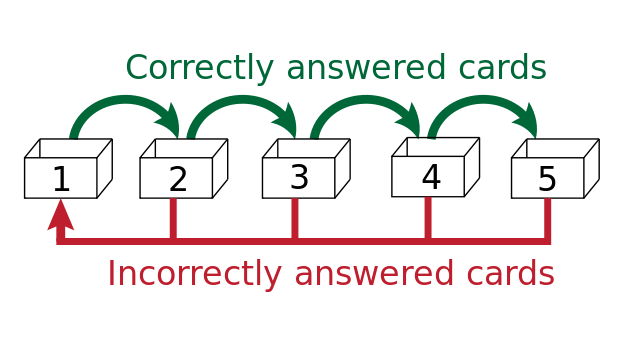This article will take you through the basics of a technique scientifically proven to increase learning and retention by up to 50% according to B. Price Kerfoot, associate professor of surgery at Harvard Medical School. Imagine the positive effect that could have on your study or career success! Even better, this method is not particularly arduous or complicated to learn. Almost anyone can do it. Every student, teacher, and parent should understand how it works and, more importantly, how to use it to ensure high-quality retention. It is especially suitable for remembering lists and vocabulary items.
The Power Of Spaced Repetition
We’re going to take a look at spaced repetition and how it can help you keep hold of large quantities of information. Essentially, spaced repetition entails leaving longer and longer gaps between the presentation of information. In the 1970s, writer and social commentator Sebastian Leitner developed the Leitner System. In this system, information is presented on pieces of paper or card (flashcards) until the learner demonstrates that he or she has memorized that particular concept. To use this system, start by writing out key pieces of information on flashcards. Make them approximately the size of a small postcard. Each piece of information must make sense in its own right, but try to restrict yourself to one key concept or theory per card. On the other side of the card, write out a question that will test your knowledge. For instance, if you are using this system to learn French vocabulary, you could simply write the French word on one side and English word on the other. Each card should have a clear question and answer. You can test yourself, or if you have a study partner, ask them to help you out. Next, find several empty boxes and line them up as shown in the diagram below. Now, test yourself. Place all of your cards in Box 1. Go through them one by one, asking yourself the question written on the card before turning it over to see whether you answered correctly. If you get the answer correct, put the card in Box 2. If you get it wrong, place it back in Box 1. Now, here’s the really important part. The trick to making this system work is to go through the cards in the “lower” boxes more often than the “higher” boxes. In other words, you need to make sure that you are reviewing, re-testing, and re-learning the material with which you are the least familiar. This means that your learning time is used efficiently, because you are dedicating more time to your weaker areas, as opposed to re-hashing content with which you are already comfortable. This system removes the temptation to re-cap information you already know. It forces you to face the questions you find hardest! It is up to you how frequently you review the questions in each box, but provided you stick to the basics — that you make sure successfully answered questions are moved to the next box, whereas incorrectly answered questions are demoted back to Box 1, and that you spend proportionately more time on the material in the lower boxes — this system will work for you. Why not try it the next time you have a long list of facts to memorize? Image Source
